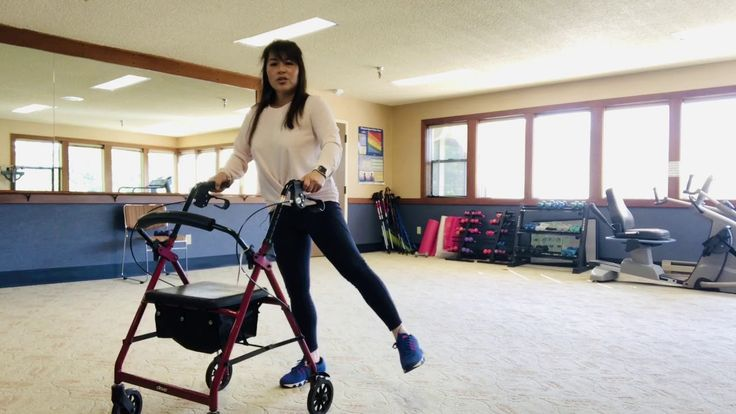What Are Some Exercises Seniors Can Do With a Cane or a Walker to Manage If They Fall?

Key Summary:
Seniors can perform gentle exercises using canes or walkers to safely recover from falls and prevent future ones. Key movements include balance drills, lower body strength training, and floor-to-standing transitions. These exercises enhance mobility, build confidence, and promote independence.
For many older adults, a fall can be life-changing. Even with a cane or walker, getting back up isn’t always easy, and the fear of falling again can be just as tough as the fall itself. It can lead to staying home more, moving less, and feeling isolated or unsure. Caregivers worry. Seniors lose confidence. And it’s easy to feel stuck.
But here’s the good news: there are simple, gentle exercises that can help. With the support of a cane or walker, these movements can strengthen muscles, improve balance, and build back the confidence to stay active and independent. This guide shares easy, safe exercises seniors can do daily, because everyone deserves to feel steady on their feet.
Table of Contents
Benefits of Fall Recovery Exercises
Seniors who do simple recovery exercises after a fall often gain more than just strength — they regain confidence. These gentle movements help improve balance, flexibility, and coordination, which are key to moving safely. Whether using a cane or walker, the goal is to feel steadier and more in control. Strengthening the legs, especially the thighs and ankles, makes everyday tasks like standing up or walking easier and safer. And with regular practice, these exercises support independence — helping seniors feel more capable and less afraid of falling again.
Doing regular recovery exercises can make a big difference — not just physically, but emotionally too. Here’s how these movements help:
- They enhance muscle memory, so safe movements become second nature.
- They reduce the risk of falling again by improving strength and coordination.
- They strengthen key joints and muscles, especially those that help with balance.
- They boost confidence when moving around the house or outdoors.
- They increase body awareness, helping with posture and alignment.
- And most importantly, they improve overall quality of life, giving seniors the freedom to move with more comfort and less worry.
According to the CDC, 1 in 4 Americans aged 65+ falls each year, but exercises can cut this risk significantly.
General Safety Tips Before Starting
Before trying any fall recovery exercises, it’s important to put safety first. Always check in with your doctor or physical therapist to make sure the movements are right for your body and ability level. Set up a safe space — a carpeted area or yoga mat is great to soften any slips. Make sure your cane or walker is in good shape, with secure, non-slip tips. And if it’s your first time doing these exercises, it’s best to have someone nearby, like a caregiver or therapist, just in case.
Here are a few simple tips to stay safe while exercising:
- Get the green light from your doctor
- Wear sturdy shoes with non-slip soles
- Keep a water bottle close
- Check your mobility aid for stability
- Clear the area of clutter or tripping hazards
- Use a medical alert device if you’re exercising alone
Warm-Up Exercises for Seniors Using Canes or Walkers
Before jumping into any exercises, it’s important to warm up your body. A few light movements can boost circulation, loosen up your joints, and help prevent strain. Whether you’re standing or sitting, you can use your cane or walker for support during these easy warm-ups.
A quick 5–10-minute routine might include:
- Shoulder rolls – roll your shoulders forward and backward to ease tension
- Neck tilts – gently move your head side to side, then up and down.
- Seated knee lifts – raise one knee at a time while holding your walker or cane for balance
- Ankle circles – lift one foot slightly and rotate your ankle slowly in each direction
- Arm circles – stretch your arms out and make small circles to wake up your upper body
According to this Fall Prevention Exercise Guide, regular warm-up improves neuromuscular response time.
Floor-to-Standing Transition Techniques
One of the most important skills seniors can learn is how to safely get up after a fall. It might feel scary, but with the right steps — and some practice — it can become a manageable process. These movements are best practiced with someone nearby, like a caregiver or physical therapist, until they feel more natural.
Here’s a simple way to do it:
- Roll onto your side to avoid straining your back
- Push up onto your hands and knees slowly
- Use a sturdy chair, walker, or low surface to support your upper body
- Bring one foot forward like you’re moving into a gentle lunge
- Push up into a standing position, using your arms and mobility aid to steady yourself
- Practice regularly in a safe environment to build muscle memory and confidence
These techniques are outlined in many senior health training manuals, such as the National Institute on Aging's guide.
Balance & Stability Training with a Walker
Your walker isn’t just for getting around — it can help you train for better balance. With a little practice, you can use it to build strength, boost coordination, and reduce your risk of falling. Start slow, go at your own pace, and use your walker for steady support. These gentle moves can make a big difference over time:
- Shift your weight side to side to improve stability
- Stand on one foot, holding the walker for balance
- Walk heel-to-toe across a short distance to challenge coordination
- Go from sitting to standing, using the walker to steady yourself
- March in place while gripping the walker lightly
- Do mini squats, using the walker like a support bar
Strengthening Lower Body Muscles with a Cane
Using a cane for exercise allows targeted strengthening, especially of the legs and hips. Holding the cane in one hand while doing leg lifts or squats adds stability and improves balance, making the moves safer for seniors. Practice standing hamstring curls, side leg raises, or toe raises. Each of these can be done while the cane offers side support. As strength increases, repetitions can be added. These moves help with walking, standing from a seated position, and maintaining steadiness on uneven surfaces.
- Standing hamstring curls
- Side leg raises
- Toe lifts and heel raises
- Small assisted squats using a cane for support
- Calf raises while lightly gripping the cane
- Hip abductions for lateral strength
For more tips on transitioning from a cane to a walker, check out our guide on How to Transition from a Cane to a Walker.
Seated Core Strengthening Exercises
Even from a seated position, seniors can train core muscles that contribute to posture, balance, and mobility. These include seated marches, twist rotations, and abdominal tightening.
Using a firm chair with a backrest, seniors can perform leg lifts, torso twists, and pelvic tilts. These not only improve functional strength but also assist in daily tasks like reaching, bending, and standing. A walker can be placed in front for extra grip if needed.
- Seated leg extensions
- Core twist side-to-side
- Marching in place while seated
- Pelvic tilts
- Controlled breathing with abdominal engagement
- Upper body resistance with light weights or resistance bands
Flexibility & Range-of-Motion Workouts
Maintaining flexibility in aging joints is critical for fall prevention and mobility. Stretching should focus on the hips, hamstrings, calves, and shoulders. Seniors can use walkers or canes to assist with controlled stretching routines.
Dynamic stretches, such as gentle arm swings or leg swings, help lubricate joints and prepare muscles. Static stretches should be held for 10–30 seconds and repeated to maintain flexibility. Avoid bouncing or jerky motions.
- Seated hamstring stretches
- Standing quad stretches with cane support
- Gentle side bends
- Arm crossovers
- Ankle and wrist rotations
- Chest and shoulder openers
Post-Fall Mental Conditioning and Breathing
The psychological impact of a fall can be profound. Seniors may experience anxiety or depression, which can increase fall risk. Controlled breathing exercises, mindfulness, and visualization techniques help reduce stress and reframe confidence.
Practicing belly breathing or guided meditation sessions post-fall fosters emotional recovery and supports physical routines. Pairing breathing with movement (inhale during lifts, exhale during release) helps regulate effort and relax tension.
- Deep belly breathing for 5–10 minutes
- Guided visualizations of movement recovery
- Mindful body scans
- Progressive muscle relaxation
- Breathing during stretches and lifts
- Cognitive reframing ("I can recover safely")
Summary of Key Exercises & Tools
|
Exercise Type |
Tool Used |
Example Exercises |
Purpose |
|
Warm-Up |
Cane/Walker |
Arm circles, shoulder rolls |
Prepare joints and circulation |
|
Strength |
Cane |
Leg lifts, squats, calf raises |
Lower body power |
|
Balance |
Walker |
Heel-to-toe walk, weight shifts |
Stability and coordination |
|
Core Training |
Chair/Walker |
Seated twists, marches |
Trunk strength and posture |
|
Flexibility |
Cane/Chair |
Hamstring and quad stretches |
Joint mobility and flexibility |
|
Recovery |
Floor/Walker |
Floor-to-stand transitions |
Self-reliance after falls |
|
Breathing |
None |
Deep breathing, meditation |
Mental calm and confidence |
Final Thoughts
Recovering from a fall isn’t just about standing back up—it’s about regaining control, confidence, and strength. These exercises provide seniors with a toolkit to handle falls and prevent future ones. With regular practice and the support of tools like walkers and canes, aging adults can maintain independence and reduce the risk of injury.
Whether you’re a caregiver or a senior yourself, incorporating these movements into your routine can bring immense benefits to your everyday life.
Frequently Asked Questions
References
The Walker Advisor is a team of experts dedicated to providing honest, research-based reviews of the best walkers and mobility aids for seniors. We gather real user feedback, both positive and negative, to help you make informed decisions. Our goal is to offer unbiased, transparent recommendations that ensure comfort, safety, and independence while meeting your unique needs and budget.
Welcome to The Walker Advisor Newsletter!
The Walker Advisor is committed to helping seniors and their families find the best mobility aids for safe and independent living.
Quick Links
Category
Copyright © 2025 The Walker Advisor All Rights Reserved
